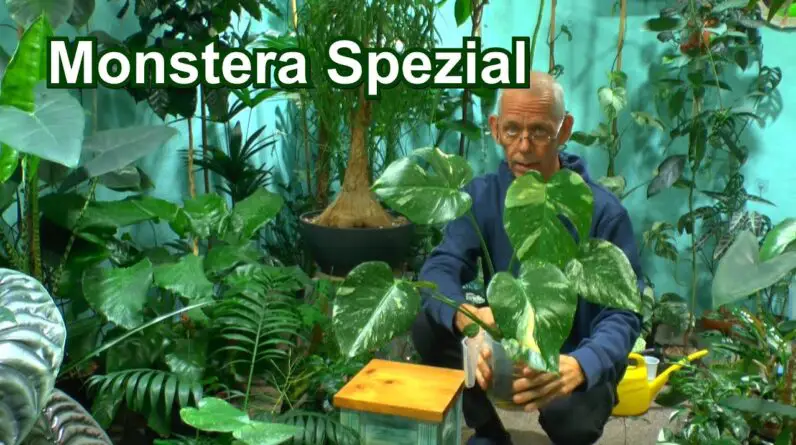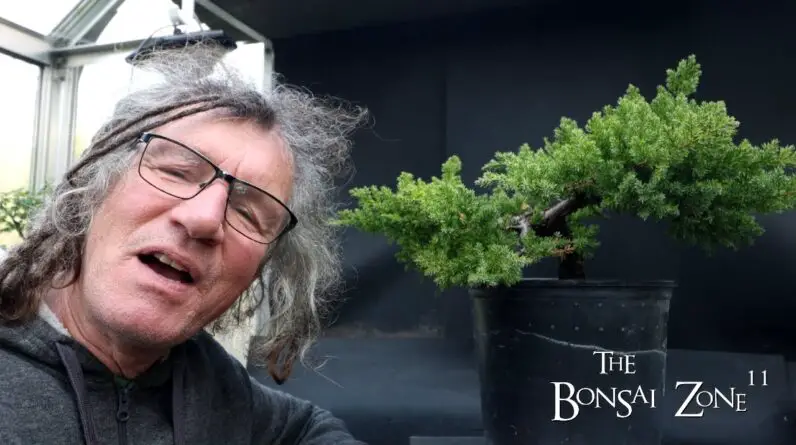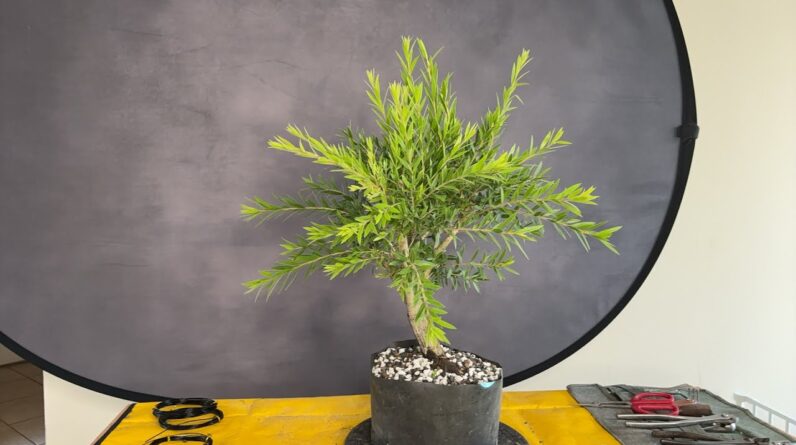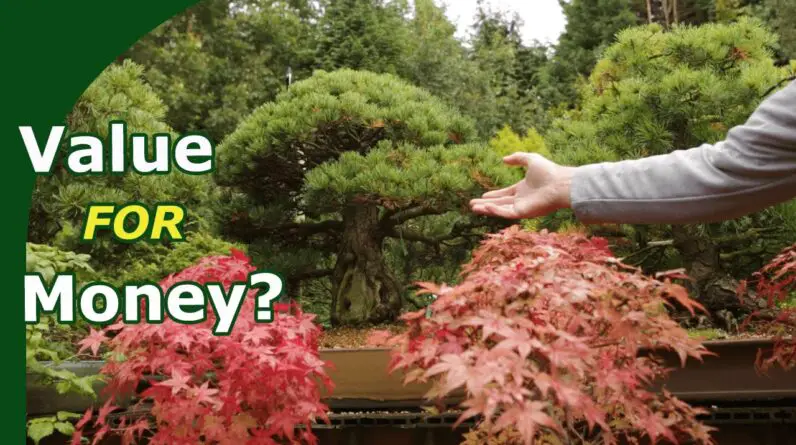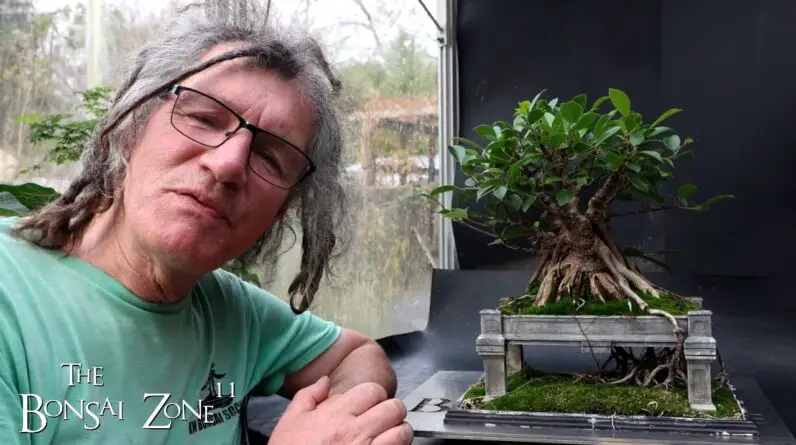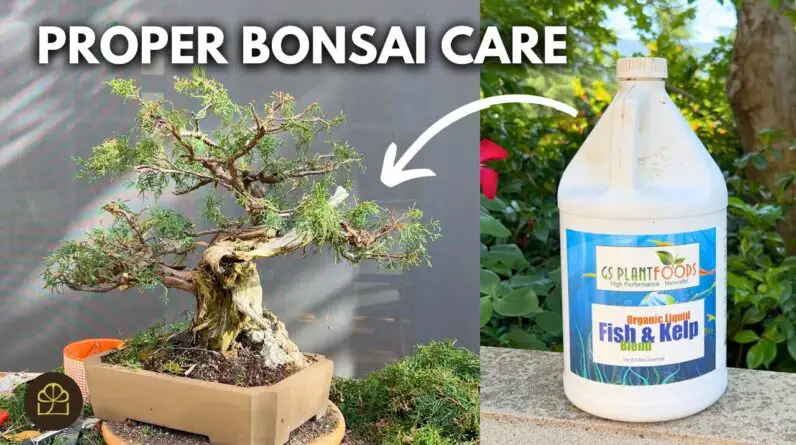When it comes to the world of bonsai trees, the Green Island Ficus stands out with its stunning beauty and unique characteristics. This particular species, known for its vibrant green foliage and delicate branches, has captured the hearts of bonsai enthusiasts worldwide.
In this article, we will explore the captivating allure of the Green Island Ficus Bonsai, delving into its origins, care requirements, and the artistry involved in shaping and maintaining this exquisite miniature tree. Join us as we embark on a journey to uncover the secrets and intricacies of cultivating and admiring the awe-inspiring Green Island Ficus Bonsai.

1. What is a Green Island Ficus Bonsai?
1.1 Origins and Characteristics
The Green Island Ficus Bonsai, scientifically known as Ficus microcarpa, is a popular choice among bonsai enthusiasts. Native to East Asia, including China, Taiwan, and Malaysia, it is known for its small, glossy, and dense leaves, which create a vibrant and lush appearance. Its trunk is often twisted and gnarled, adding to its character and charm.
1.2 Size and Shape
Green Island Ficus Bonsai can reach a height of up to 12 inches. Its compact size makes it suitable for indoor cultivation, perfect for those living in apartments or houses with limited space. Its shape can vary depending on the preferences of the grower. It can be trained to have an upright, cascading, or windswept style, among others.
1.3 Foliage and Colors
The foliage of the Green Island Ficus Bonsai is evergreen, which means it retains its leaves throughout the year. The leaves are small and waxy, with a glossy texture. The color of the leaves can range from dark green to vibrant shades of emerald. Some varieties may have variegated leaves, adding an extra visual interest to the bonsai.
2. Benefits of Green Island Ficus Bonsai
2.1 Therapeutic Effects
Having a Green Island Ficus Bonsai in your home or office can provide various therapeutic effects. The presence of plants, especially bonsai, has been shown to reduce stress, improve mood, and enhance overall well-being. Taking care of a bonsai involves mindfulness and focus, allowing you to disconnect from the pressures of daily life and find peace in nurturing a living being.
2.2 Aesthetically Pleasing
The beauty of the Green Island Ficus Bonsai lies in its delicate and intricate appearance. The miniature size and intricate details of the tree, such as the twisted trunk and the vibrant foliage, make it an eye-catching addition to any space. It can serve as a conversation starter and a focal point in your home, office, or garden.
2.3 Air Purification
Like many other indoor plants, the Green Island Ficus Bonsai contributes to improving air quality by absorbing harmful pollutants and releasing oxygen. This can lead to a healthier indoor environment by reducing the levels of toxins such as formaldehyde, benzene, and xylene. Additionally, the bonsai can help increase humidity levels, especially in dry climates, which benefits respiratory health.
3. Selecting a Green Island Ficus Bonsai
3.1 Considerations for Beginners
If you are new to bonsai cultivation, the Green Island Ficus Bonsai is an excellent choice. It is relatively forgiving and adaptable, making it easier for beginners to care for. Its hardy nature allows it to tolerate a range of conditions, although it thrives in bright, indirect light. It is essential to consider factors such as available space, commitment to care, and personal preferences before selecting a bonsai.
3.2 Choosing a Suitable Plant
When choosing a Green Island Ficus Bonsai, look for a healthy specimen with vibrant leaves and no signs of pests or disease. Examine the trunk and branches for any structural issues or wounds. It is best to select a plant with a well-developed root system, as this indicates its overall health and ability to thrive.
3.3 Evaluating Health and Condition
Before purchasing a Green Island Ficus Bonsai, carefully inspect the plant to ensure it is in good health. Look for any signs of wilting, yellowing, or dropping leaves, as these may indicate underlying issues. Check the soil moisture, as both overwatering and underwatering can harm the bonsai. Assess the overall condition of the foliage, trunk, and branches to determine the plant’s vitality.
4. Caring for Green Island Ficus Bonsai
4.1 Light and Temperature
The Green Island Ficus Bonsai thrives in bright, indirect light. It should be placed near a window where it can receive adequate sunlight without being exposed to direct sunlight, which can scorch the leaves. As for temperature, it prefers warmth and should be kept in a room with temperatures between 60°F to 75°F (15°C to 24°C).
4.2 Watering and Humidity
Proper watering is crucial for the health of the Green Island Ficus Bonsai. The soil should be kept slightly moist but not overly wet. Water the bonsai thoroughly until the water drains out of the bottom of the pot, ensuring that the roots receive sufficient moisture. Avoid letting the bonsai sit in standing water, as this can lead to root rot. Maintaining proper humidity levels is also essential, as the bonsai prefers higher humidity; misting the foliage or using a humidity tray can help achieve this.
4.3 Pruning and Shaping
Regular pruning is necessary to maintain the desired shape and size of the Green Island Ficus Bonsai. Use sharp and clean bonsai shears to trim the branches and foliage, ensuring a clean cut that promotes healthy regrowth. Shaping techniques, such as wiring, can be used to train the bonsai into various styles. However, be cautious not to over-prune or stress the tree, as it could result in poor growth or even death.
4.4 Fertilizing
To promote healthy growth, it is important to fertilize the Green Island Ficus Bonsai regularly. Use a balanced liquid fertilizer specifically formulated for bonsai during the growing season, typically from spring to fall. Follow the instructions provided by the manufacturer for the appropriate dosage and frequency of application. Avoid fertilizing during dormant periods or when the plant shows signs of stress.
4.5 Repotting
Repotting is an essential part of bonsai care, as it allows for root health and prevents the bonsai from becoming root-bound. The Green Island Ficus Bonsai should be repotted approximately every two to three years, or when the roots have filled the current pot. Repotting should be done during the spring, before the growth season begins. When repotting, trim back a portion of the roots and replace the soil with a well-draining bonsai soil mix.

5. Common Challenges and Solutions
5.1 Pests and Diseases
Despite its resilience, the Green Island Ficus Bonsai is not immune to pests and diseases. Common pests that can affect the bonsai include aphids, scale insects, and spider mites. Regularly inspect the foliage and branches for any signs of infestation, such as yellowing leaves or webbing. Treat pests promptly with appropriate insecticides or by manually removing them. Diseases such as fungal infections can be prevented by providing proper airflow, avoiding overwatering, and maintaining good hygiene in pruning tools.
5.2 Yellowing or Dropping Leaves
Yellowing or dropping leaves can be a sign of various issues with the Green Island Ficus Bonsai. Overwatering, underwatering, inadequate lighting, or sudden temperature changes can all contribute to leaf discoloration or shedding. Assess the care routine and adjust watering, lighting, and temperature accordingly to rectify the issue. It is also important to check for pests or diseases that may be causing damage to the foliage.
5.3 Root Issues
Root issues can arise when the Green Island Ficus Bonsai is not properly cared for. Root rot, caused by overwatering or poorly draining soil, can lead to root decay and potentially kill the bonsai. To prevent this, ensure proper watering techniques and use well-draining soil. Regularly inspect the roots during repotting for any signs of rot or damage and prune as necessary. If root issues are severe, consult a bonsai professional for guidance.
5.4 Overwatering or Underwatering
Finding the right balance in watering the Green Island Ficus Bonsai can be challenging. Overwatering can lead to root rot and other fungal diseases, while underwatering can cause stress and leaf wilting. The key is to consistently check the moisture level of the soil and adjust the watering frequency accordingly. Water thoroughly when the top inch of soil feels slightly dry to the touch, but avoid letting the bonsai sit in standing water after watering.
6. Styling Techniques for Green Island Ficus Bonsai
6.1 Formal Upright Style
The formal upright style is a classic and elegant choice for the Green Island Ficus Bonsai. It involves a straight and upright trunk, with branches gradually decreasing in size as they ascend. This style showcases the natural beauty and symmetry of the bonsai, giving it a balanced and harmonious appearance. Regular pruning and wiring are necessary to maintain the desired shape.
6.2 Informal Upright Style
The informal upright style is a more relaxed and natural-looking option for the Green Island Ficus Bonsai. It mimics the growth pattern of a tree growing in the wild, with a slightly curved trunk and branches that twist and turn. This style creates a sense of movement and dynamism, adding visual interest to the bonsai. Pruning and wiring are used to enhance the natural shape and structure.
6.3 Cascade Style
The cascade style is a dramatic and visually striking choice for the Green Island Ficus Bonsai. It involves a trunk that cascades downwards, resembling a tree growing on a cliff or a waterfall. This style symbolizes strength and resilience. Special care must be taken when training the bonsai into the cascade style, as the branches and foliage need to be positioned and secured properly.
6.4 Windswept Style
The windswept style captures the effect of strong winds shaping the growth of the Green Island Ficus Bonsai. The trunk appears slanted, and the branches lean in one direction, mimicking the exposure to strong gusts. This style tells a story of endurance and tenacity. Regular pruning and wiring are necessary to achieve the desired windswept appearance, with branches positioned in a way that indicates the force of the wind.
6.5 Group Planting
Group planting, also known as forest planting or yose-ue, involves planting multiple Green Island Ficus Bonsai together to create the illusion of a miniature forest. This style emphasizes harmony and unity among the individual trees. Select bonsai with varying heights and shapes to create a more realistic and natural forest scene. Care should be taken to maintain adequate spacing and ensure each bonsai receives sufficient light and water.

7. Displaying Green Island Ficus Bonsai
7.1 Choosing the Right Pot
Choosing the right pot is crucial for displaying the Green Island Ficus Bonsai effectively. The pot should complement the style and size of the bonsai, providing a visually pleasing balance. Traditional ceramics, such as unglazed clay pots, are often preferred for their natural look and ability to absorb excess moisture. Ensure that the pot has proper drainage holes to prevent water accumulation.
7.2 Placement and Lighting
The placement of the Green Island Ficus Bonsai can greatly enhance its visual impact. Consider placing the bonsai in a location that allows it to be the focal point of the room or garden. Ensure that it receives adequate natural light, avoiding direct sunlight, which can damage the leaves. If natural light is scarce, supplement it with artificial grow lights to ensure proper growth and health.
7.3 Accentuating with Stones or Moss
To further enhance the beauty of the Green Island Ficus Bonsai, consider incorporating stones or moss into the display. Small rocks or pebbles can be strategically placed around the base of the bonsai to create a more natural and aesthetically pleasing appearance. Moss can be used to cover the soil surface, adding texture and creating a sense of tranquility. These elements add depth and visual interest to the overall display.
8. Green Island Ficus Bonsai and Feng Shui
8.1 Symbolism and Placement
In Feng Shui, the Green Island Ficus Bonsai is believed to bring positive energy and harmony to the environment. It is associated with abundance, longevity, and good fortune. Placing the bonsai in the wealth or abundance area of a space, such as the southeast corner, is believed to attract prosperity and wealth. However, it is important to consult a Feng Shui expert for personalized guidance based on the specific needs and layout of your space.
8.2 Energizing and Balancing Spaces
The presence of the Green Island Ficus Bonsai can energize and balance spaces, both indoors and outdoors. Its vibrant and lush foliage adds life and vitality to any room or garden. In Feng Shui, it is believed to balance the energy flow, promoting a sense of tranquility and harmony. The bonsai’s connection to nature can help create a peaceful and serene atmosphere, ideal for relaxation and meditation.
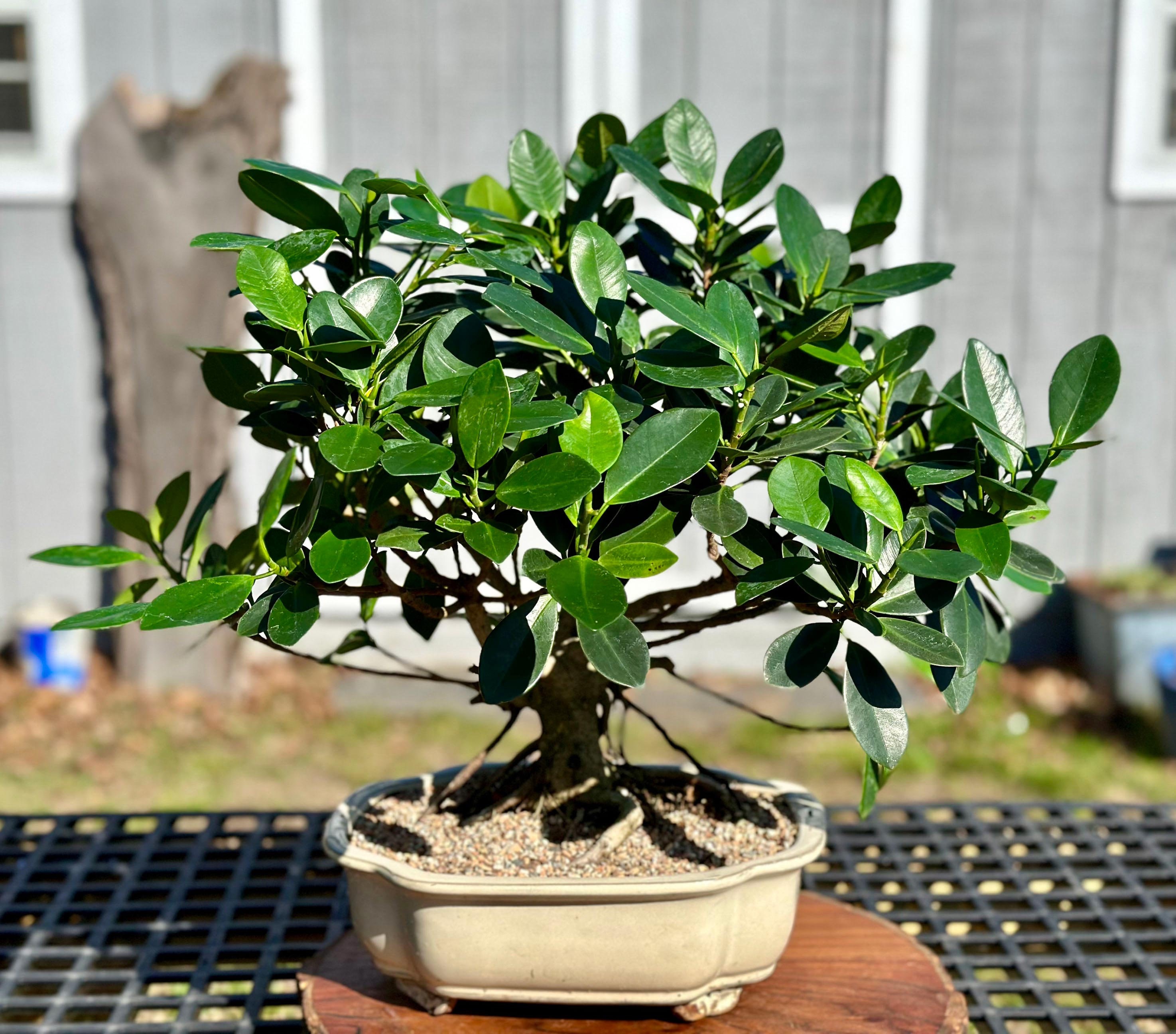
9. Green Island Ficus Bonsai as a Gift
9.1 Significance and Meaning
Gifting a Green Island Ficus Bonsai holds special significance and meaning. It symbolizes growth, strength, and resilience, making it an ideal gift for someone embarking on a new journey or facing challenges. The bonsai represents the bond between the giver and the recipient, as it requires ongoing care and nurturing. It can also symbolize the everlasting nature of the relationship and the wish for abundant blessings and prosperity.
9.2 Suitable Occasions
The Green Island Ficus Bonsai is a thoughtful and unique gift for various occasions. It can be given as a housewarming gift to bring positive energy and abundance to a new home. It is also a meaningful gift for birthdays, anniversaries, or graduations, serving as a reminder of growth and personal development. Additionally, it can be a touching gift for those going through difficult times, offering support and encouragement.
9.3 Presentation and Care Instructions
When presenting a Green Island Ficus Bonsai as a gift, consider including care instructions to ensure the recipient can properly care for the bonsai. Provide guidance on watering, lighting, temperature, and pruning techniques. Include a personal note explaining the symbolism and meaning behind the bonsai, allowing the recipient to appreciate its significance fully. Consider presenting the bonsai in a decorative or personalized pot to make it even more special.
10. Growing Green Island Ficus Bonsai from Seeds
10.1 Collecting and Preparing Seeds
Growing a Green Island Ficus Bonsai from seeds can be a rewarding and fulfilling experience. To collect seeds, allow a mature bonsai to produce fruits, which are small figs. Once the figs ripen and turn dark, carefully collect the seeds from inside by cutting them open. Clean the seeds and allow them to dry for a few days before proceeding.
10.2 Germination Process
To germinate the Green Island Ficus Bonsai seeds, create a suitable growing medium by mixing equal parts of peat moss and perlite or vermiculite. Sow the seeds on the surface of the medium, gently pressing them in. Place the container in a warm and humid environment, such as a greenhouse or a plastic bag. Maintain moisture without soaking the seeds, as excessive water can prevent germination.
10.3 Early Care and Development
During the early stages of growth, provide the germinated Green Island Ficus Bonsai with bright, indirect light to promote healthy development. Maintain a consistent temperature between 70°F to 85°F (21°C to 29°C) to facilitate growth. Water the seedlings carefully, keeping the soil moist but not waterlogged. As the seedlings mature, transplant them into larger containers with appropriate bonsai soil, following the regular care guidelines for established bonsai.
In conclusion, the Green Island Ficus Bonsai is a captivating and versatile plant that offers numerous benefits. Its beauty, therapeutic effects, and air-purifying qualities make it a popular choice among bonsai enthusiasts. Selecting the right plant and providing proper care, such as light, watering, pruning, and fertilizing, are crucial for its health and longevity. The various styling techniques, alongside careful placement and display, further enhance its visual appeal. Whether receiving it as a gift or growing it from seeds, the Green Island Ficus Bonsai brings joy, symbolism, and a connection to nature into our lives.

The Best-Kept Secrets of Ficus Bonsai Success: Tips and Tricks Revealed


